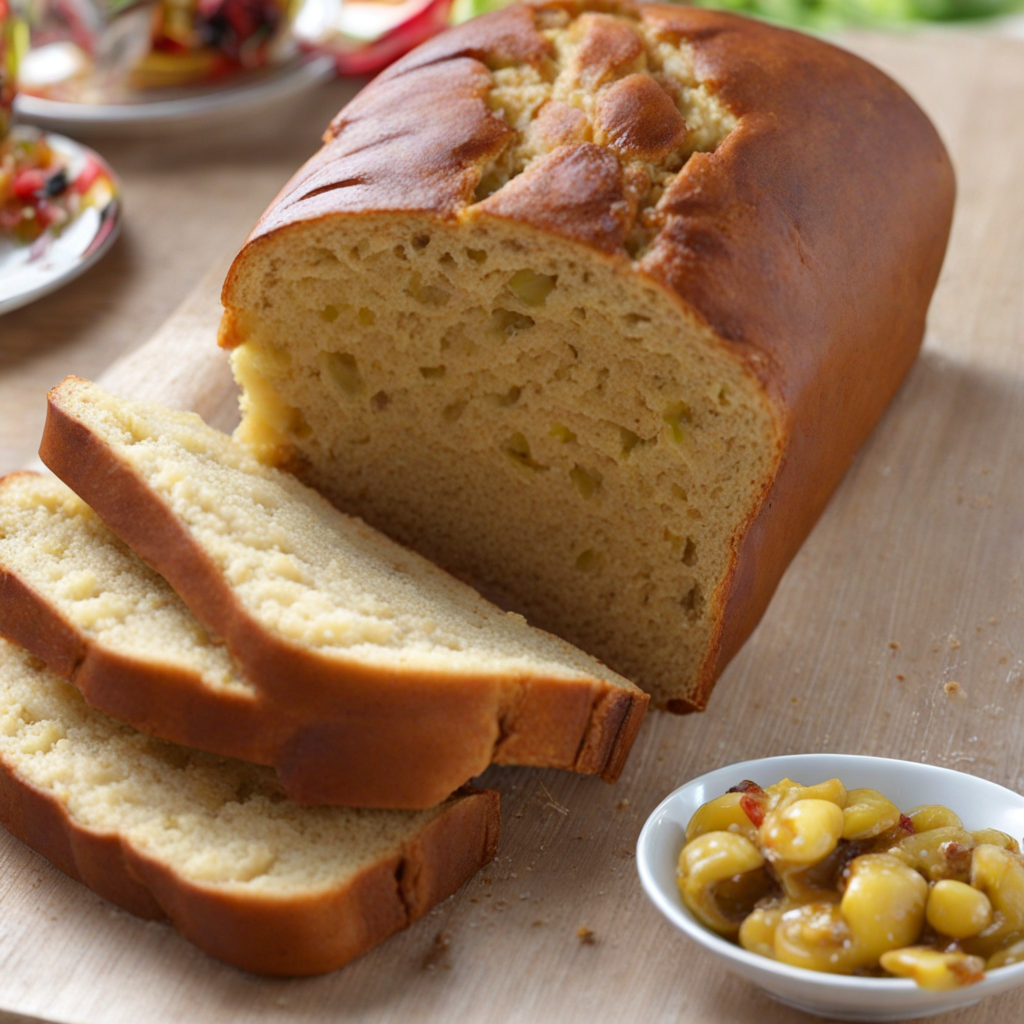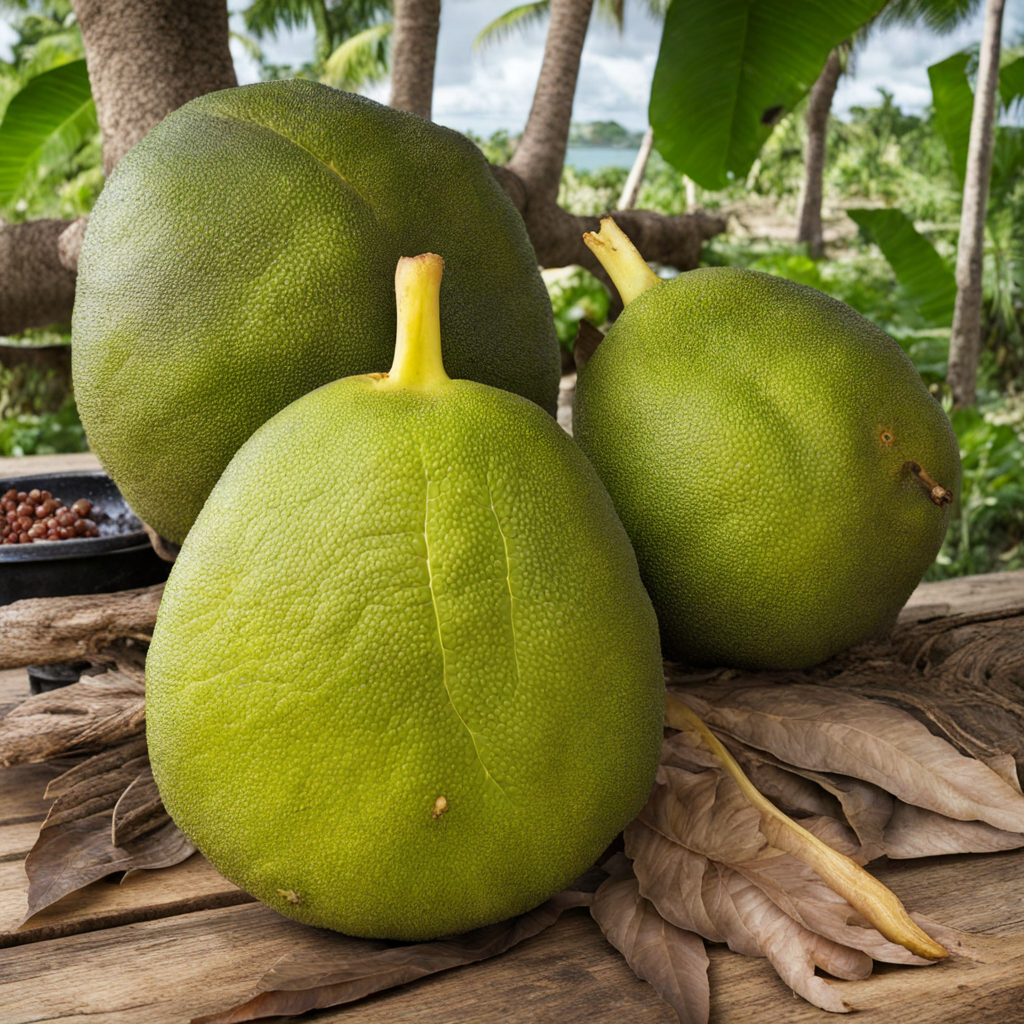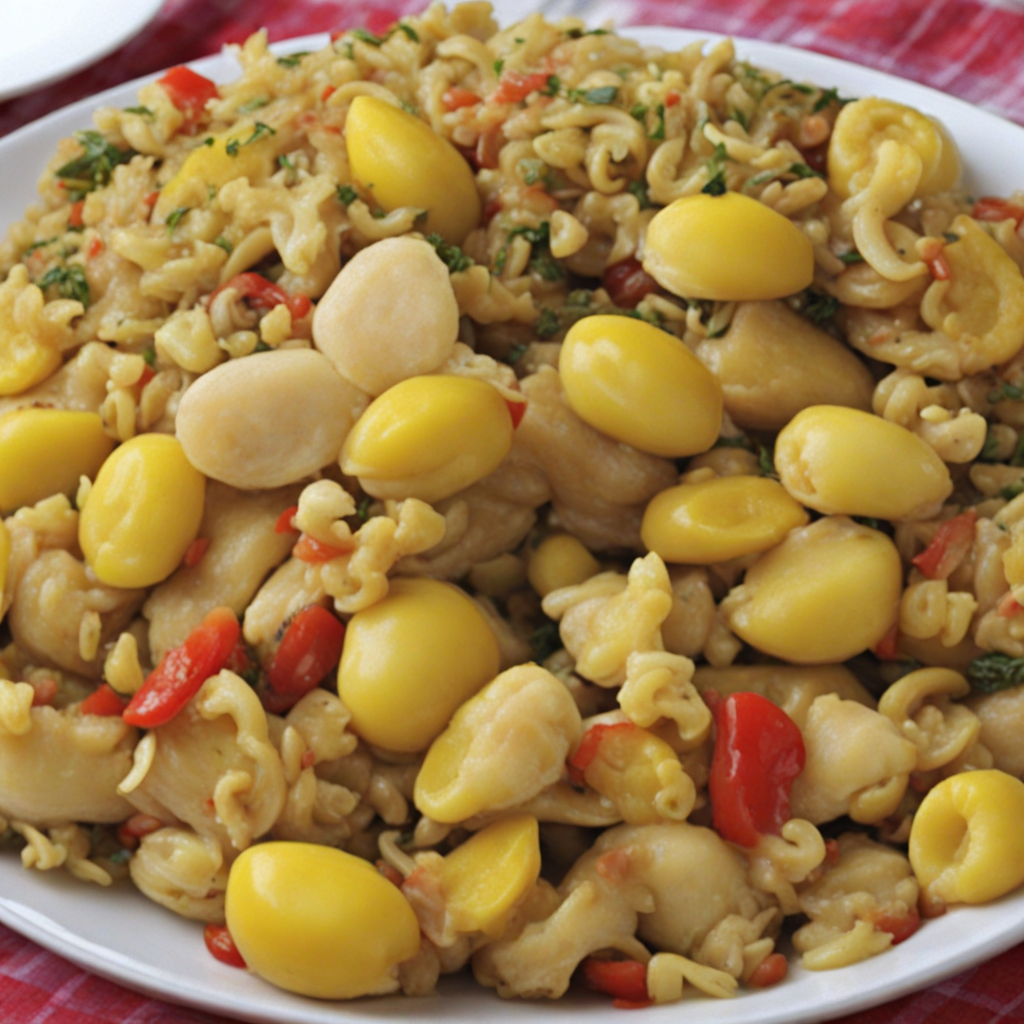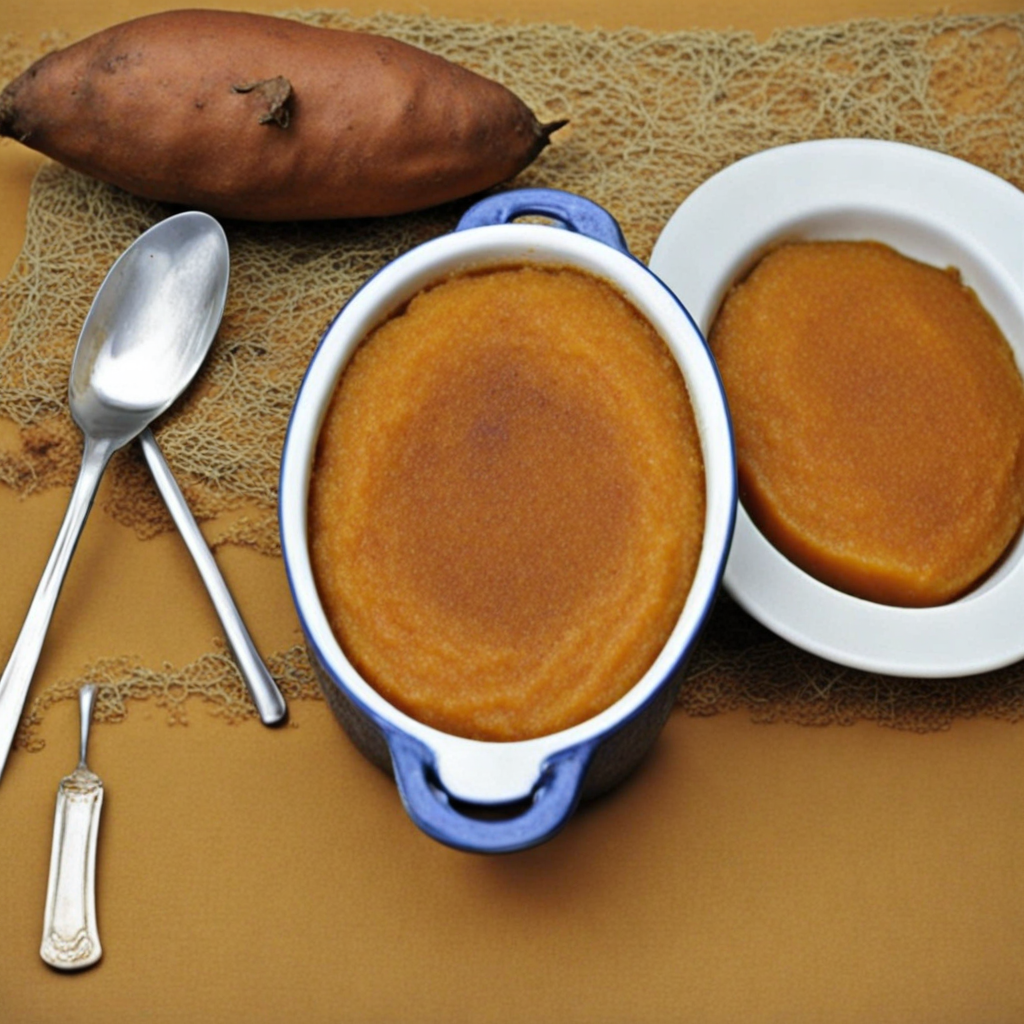Ackee Bread
Ackee Bread is a unique Jamaican dish that combines the rich, buttery texture of ackee fruit with the comforting qualities of traditional bread. The ackee, which is a staple in Jamaican cuisine, has a slightly nutty flavor and is often compared to scrambled eggs when cooked. When incorporated into bread, the ackee lends a subtle sweetness and creaminess that beautifully complements the dough, creating a harmonious balance of flavors. The bread is often infused with spices or herbs, enhancing its complexity and making each bite a delightful experience for the palate. This bread is typically made using a blend of all-purpose flour, ripe ackee, and other ingredients such as baking powder, salt, and a hint of sugar. The ackee is prepared by boiling and mashing it to achieve a smooth consistency, which is then mixed into the dough. The result is a soft, moist bread with a golden crust that is perfect for breakfast or as a side dish. Its unique flavor profile makes it a versatile option, pairing well with savory dishes like jerk chicken or simply enjoyed with butter or jam. Ackee Bread is not just a delicious treat; it also represents the vibrant culture of Jamaica. Often served during special occasions or family gatherings, this bread symbolizes togetherness and the joy of sharing food. For those looking to explore new tastes, Ackee Bread offers a delightful journey into the heart of Jamaican flavors, showcasing the island's culinary creativity and its love for fresh, local ingredients. Each slice is a testament to the rich heritage of Jamaica, inviting food lovers to savor a piece of the island's soul.
How It Became This Dish
Origin of Ackee Bread Ackee bread, a unique and flavorful dish from Jamaica, has its roots intertwined with the island's rich cultural tapestry. The ackee fruit, which is the primary ingredient, has a fascinating history itself. Originally brought to Jamaica from West Africa in the 18th century, the ackee tree flourished in the Caribbean climate. Its bright yellow flesh, when cooked properly, has a creamy texture reminiscent of scrambled eggs and a slightly nutty flavor. This fruit is a cherished component of Jamaican cuisine, often paired with salted fish in the national dish, ackee and saltfish. The transformation of ackee into bread is a relatively modern culinary innovation, reflecting the adaptability and creativity of Jamaican cooks. The idea of incorporating ackee into bread likely emerged as a way to utilize the abundant local ingredient while also catering to the evolving tastes of the Jamaican populace. With the growth of flour milling in the late 19th and early 20th centuries, the fusion of ackee with flour to create a bread variant became a practical and appealing option for many households. \n Cultural Significance Ackee bread holds significant cultural value in Jamaica, embodying the island's culinary heritage while also showcasing the influence of various cultural practices. Jamaican cuisine is a melting pot of flavors and traditions, influenced by African, Spanish, British, and Indigenous Taino cooking methods. The introduction of ackee into bread reflects this blending of cultures—ackee itself is a remnant of African heritage, while bread is a staple in many global diets, particularly influenced by European settlers. In Jamaican households, ackee bread is often associated with comfort and home-cooked meals. It serves as a versatile accompaniment to many dishes, ranging from hearty soups to spicy stews. The bread can also be enjoyed on its own, often with butter or as a base for various toppings. Its role in family gatherings and celebrations further underscores its importance in Jamaican culture, serving as a symbol of togetherness and community. \n Development Over Time As Jamaica's culinary landscape evolved throughout the 20th century, so did the preparation and presentation of ackee bread. Initially, traditional methods of bread-making were used, relying heavily on manual techniques and local ingredients. However, as the island embraced modernization in the latter half of the century, new baking technologies and practices emerged. Bakeries began to pop up across the island, offering a range of baked goods, including ackee bread, which became increasingly popular in urban areas. The introduction of commercial baking products made it easier for home cooks to experiment with ackee bread recipes. Variations began to appear, with bakers adding spices, herbs, and even other local ingredients like scotch bonnet peppers, onions, and thyme to enhance the flavor profile. This adaptability has allowed ackee bread to remain relevant in the ever-changing Jamaican culinary scene, appealing to both traditionalists and modern food enthusiasts alike. \n Global Influence and Recognition In recent years, ackee bread has gained recognition beyond Jamaica's shores, reflecting the global trend towards exploring diverse culinary traditions. Jamaican cuisine, with ackee as a standout ingredient, has captured the attention of food lovers and chefs around the world. This newfound interest has led to the incorporation of ackee bread in Caribbean-themed restaurants and food festivals, where it is often showcased alongside other Jamaican delicacies. Social media has played a pivotal role in promoting ackee bread and Jamaican cuisine as a whole. Food bloggers and influencers have shared their experiences with ackee bread, showcasing its unique taste and versatility. This exposure has encouraged more people to try their hand at making this delicious bread at home, leading to a resurgence in traditional recipes and cooking methods. \n Health and Nutrition Ackee bread not only offers a delightful culinary experience but also boasts nutritional benefits. The ackee fruit is rich in healthy fats, particularly oleic acid, which is known to support heart health. It also contains essential vitamins and minerals, including vitamin A, vitamin C, and potassium, making ackee a nutritious addition to the diet. When combined with whole grain flours, ackee bread can serve as a source of dietary fiber, contributing to overall health and well-being. As the global trend towards healthy eating continues, ackee bread is well-positioned to appeal to those seeking nutritious and flavorful options. The ability to use whole grain or alternative flours opens up opportunities for innovative adaptations of the recipe, catering to various dietary preferences, including gluten-free variations. This adaptability ensures that ackee bread remains a relevant and cherished dish in the ever-evolving culinary landscape. \n Conclusion of Contemporary Influence Today, ackee bread stands as a testament to Jamaica's vibrant culinary heritage and its ability to evolve over time. It is a delicious representation of the island's history, culture, and the innovative spirit of its people. As Jamaican cuisine continues to gain traction globally, ackee bread is likely to remain a beloved staple, bridging the gap between tradition and modern culinary practices. In Jamaica, ackee bread is more than just a food item; it's a reflection of cultural identity and community spirit. As families gather around the table to enjoy this delightful bread, they partake in a rich tradition that connects generations. Whether enjoyed at home, in a bustling bakery, or at a Caribbean food festival, ackee bread represents the heart and soul of Jamaican cuisine, celebrating the island's diverse influences and enduring flavors.
You may like
Discover local flavors from Jamaica







